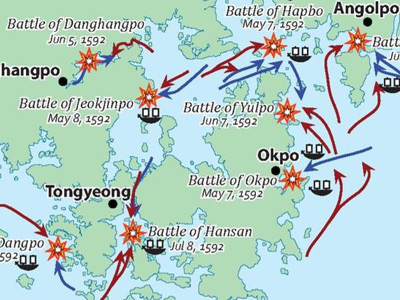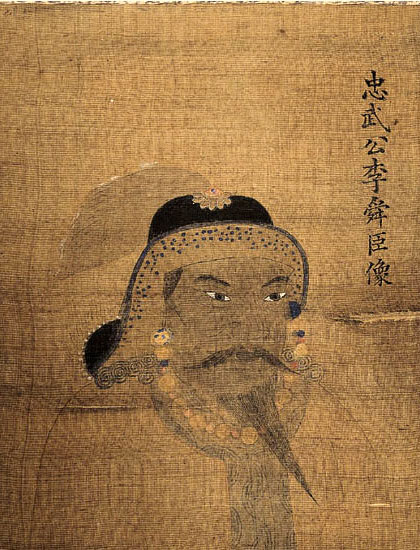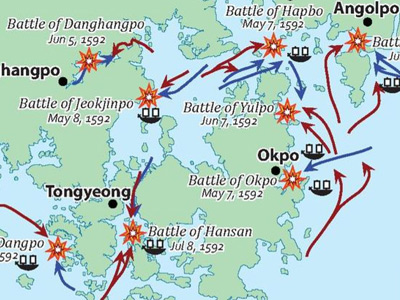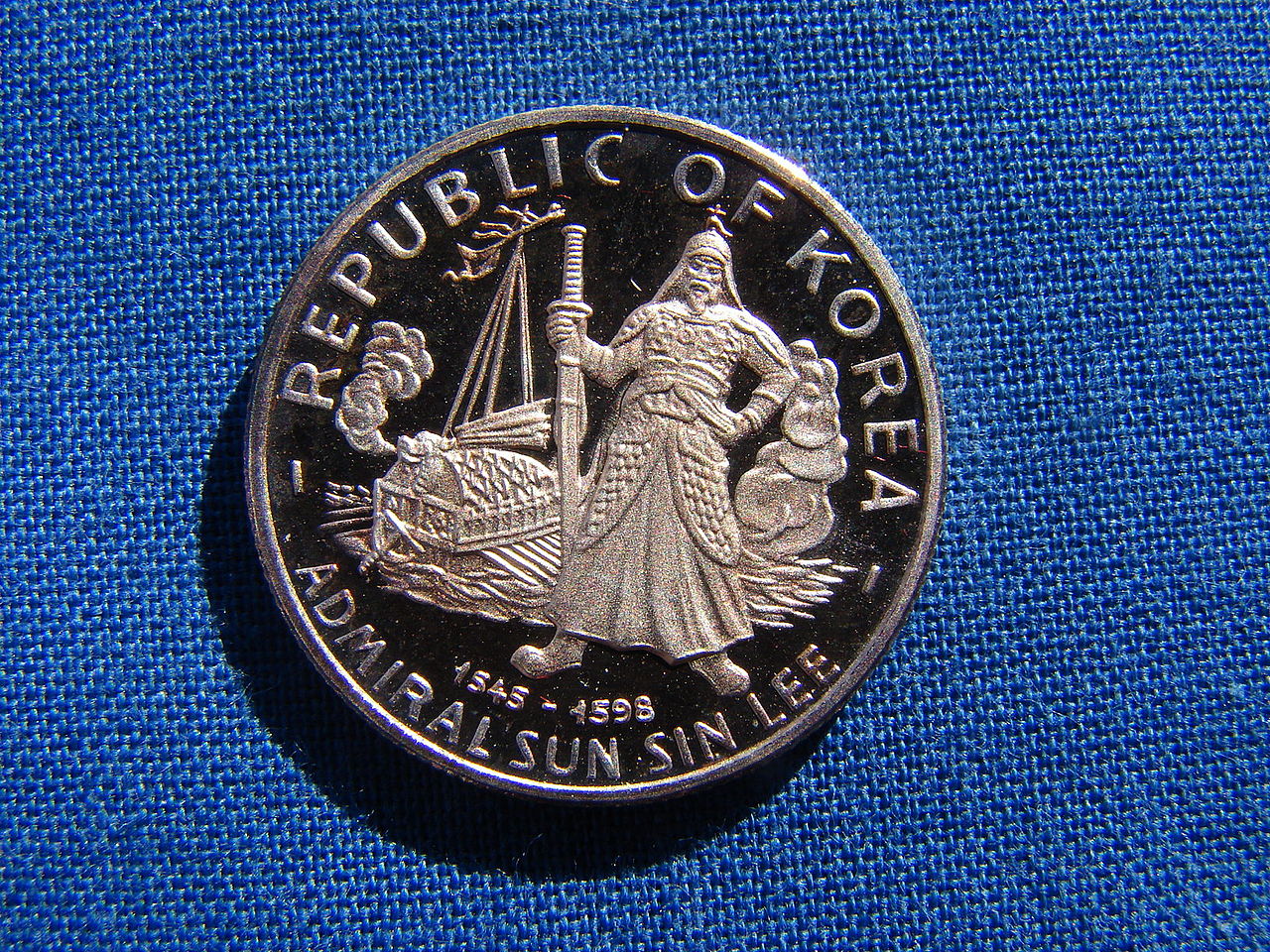Battle of Myeongnyang 명량대첩 (1597)

In the Battle of Myeongnyang, on October 26, 1597, the Korean Joseon kingdom's navy, led by Admiral Yi Sun-sin, fought the Japanese navy in the Myeongnyang Strait, near Jindo Island, off the southwest corner of the Korean peninsula.
With only 12 ships remaining from Admiral Won Gyun's disastrous defeat at the Battle of Chilchonryang, Admiral Yi held the strait as a "last stand" battle against the Japanese Navy, who were sailing to support their land army's advance towards the Joseon capital of Hanyang (modern-day Seoul).

The actual numeric strength of the Japanese fleet that Admiral Yi fought is unclear; various sources indicate the number of Japanese ships could have been anywhere between 120 and 330 ships, though the low end of this range appears to be a count of actual warships and the high end appears to be referring to the entire Japanese fleet (including roughly 200 supporting non-combatant ships). Regardless of the size of the Japanese fleet, all sources indicate that the Japanese ships heavily outnumbered the Korean ships, by at least a ten-to-one ratio. In total 30 Japanese warships were sunk or crippled during the battle. Todo Takatora, the commander of the Japanese navy, was wounded during the battle and half of his subordinate officers were also wounded or killed. Given the disparity in numbers of ships, the naval battle is regarded as one of Admiral Yi's most remarkable victories, and a humiliating naval defeat for the Japanese. Even after the victory, however, the Joseon navy was still outnumbered by the remaining Japanese navy, so Admiral Yi withdrew to the Yellow Sea to resupply his fleet and have more space for a mobile defense. After the Korean navy withdrew, the Japanese navy made an incursion into the western coast of Korea, near some islands in Yeonggwang County.
HISTORY

RESOURCES
This article uses material from the Wikipedia article "Battle of Myeongnyang", which is released under the Creative Commons Attribution-Share-Alike License 3.0.
© Stories Preschool. All Rights Reserved.










